In deep and up close: Underwater photographer Stephen Frink
Underwater photographer Stephen Frink discusses his techniques for underwater photography.
• November 2018 issue
Holding onto success despite changing tides
As he sips a cup of coffee in a Starbucks near his Key Largo studio in the Florida Keys, veteran underwater photographer Stephen Frink doesn’t pause for a second when asked to name the most important requirement for a great underwater photograph.
“That’s easy,” says the 69-year-old Frink, whom many publications have called the world’s most widely published underwater photographer. “It’s proximity.”
Frink is on a roll. After taking another drink, he launches into a mini-discourse that sounds like it was taken from a combination of Physics 101 and Introduction to Photography. “Because water is about 800 times denser than air, it filters out colors the deeper or farther from the light source you are. Light is selectively absorbed as a function of depth. Red fades first, followed by orange, yellow, green, blue, indigo, and then violet. And because light sources, such as a strobe, are only effective for a few feet underwater, you need to get up close and personal—shrinking the water column—to capture a sharp image,” he explains. “You’ll have a hard time getting anything worthwhile if you are more than five feet away.”
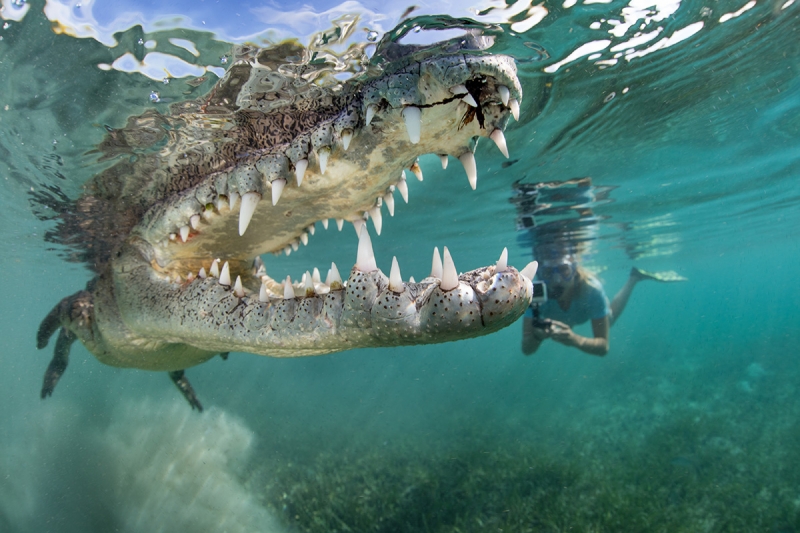
Closer and closer
Is there such a think as too close? “Not really,” says Frink, who’s famous for going nose to nose (and nose to fin) with man-eating great white sharks, killer whales, and dangerous crocodiles as well as more docile subjects like dolphins. “When you are in the water you have to get close—within a few feet —to produce intimacy.” He smiles when he’s reminded that newspapers recently described several of his close encounters with sharks and crocodiles as “jaw-dropping” and “heart-stopping.”
“It’s a zen-like experience, knowing how close I can get to an underwater creature and still be safe,” says Frink. “You have to know their nature and you also have to be careful not to approach too clumsily or too fast when you’re coming up to them for a photograph. For example, you should set your camera and strobe before you approach a fish and control your breathing so your air bubbles won’t scare them off. You have to project a benign presence in the water or you’ll scare them away and lose that moment you are after.”Being aware of your surroundings is also paramount. He remembers an assignment shooting great white sharks off South Africa when he laid down on his belly atop a boat’s swim platform in hopes of getting an over-and-under photograph of a shark. To get the image he wanted, he had his camera half submerged in the water and instructed the shark wrangler to throw out bait to lure the sharks to him.
“I was working with a full-frame fisheye 15mm lens to get the depth of field I needed to get an image of a shark with its mouth wide open. Eventually I saw a beautiful great white, one of the world’s premiere predators, approaching me,” he remembers. “I shouted ‘Closer, closer, closer!’ to the wrangler as he threw out more bait, and I was thrilled to see the shark speeding toward me.”
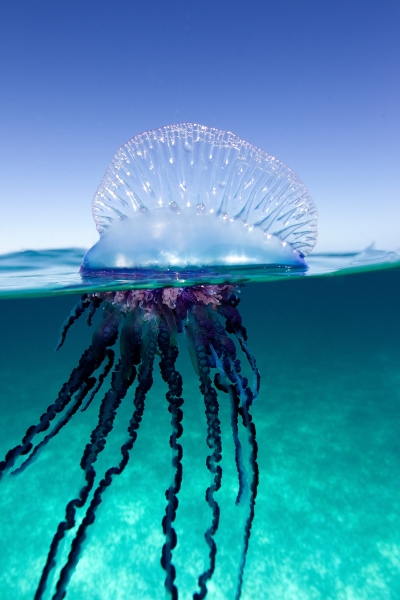
“Because I was seeing the great white through my wide-angle lens, I didn’t have a good sense of the perspective as it swam toward me. I kept shouting, ‘Closer, closer, closer!’ By the time the shark—with his mouth wide open—had filled the frame, he also crashed straight into the dome of my lens and smashed the camera—Bam!—right into my head. I was startled and dizzied as I lay on the dive platform.
“Everyone else on the boat was terrified, shouting at me to see if I was OK. I had some nasty bruises, but it could have been a lot worse. As I lay there I heard my then 10-year-old daughter Alexa, who had grown up watching me photograph underwater all over the world, shout, ‘Daddy! Daddy!’
“Then I turned to her and she asked, ‘Did you get the shot?’” Frink laughs and recalls, “I got it.”
Commercial praise
While Frink’s portfolio of dramatic encounters with denizens of the deep have earned him international praise, his skill at mastering the art of photographing people and gear underwater has kept him in demand by magazines, advertising agencies, and equipment manufacturers since he started in the late 1970s. He’s been director of photography for Scuba Diving magazine, a contributing photographer for Skin Diver magazine, and has completed assignments for clients as varied as Canon, Nikon, Victoria’s Secret, American Express, Rolex, and others.
“Learning to photograph fish is great, but to make it in this field, I also needed to learn to photograph people underwater,” says Frink. “That can be trickier.” He starts ticking off the issues involved. Communication is difficult, so he uses a variety of hand signals to instruct a model how to move or strike a specific pose. “You may need to position a model downcurrent so her hair is flowing naturally and not covering her face or standing on end.” Using a translucent mask that lets light in from the side and the right waterproof makeup are also important. “Because a mask and regulator can cover so much of a model’s face, I look for models with very expressive eyes,” says Frink. “There’s very little you can communicate with underwater, so the eyes are paramount.”
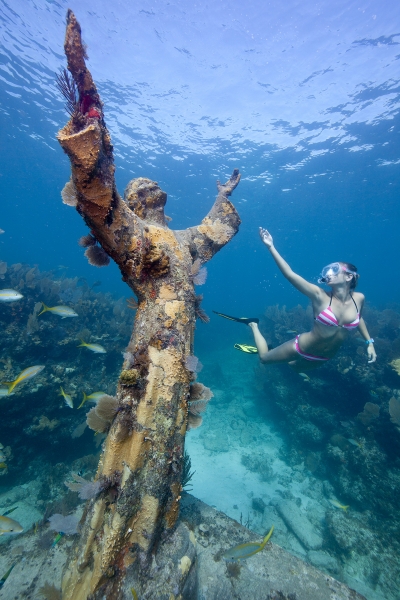
His favorite model was his wife, Barbara, who passed away in 2015. “She had the most beautiful, expressive eyes I have ever seen and always knew exactly what I was looking for. She had extraordinary instincts and understood things like controlling her buoyancy, posture, and how to engage marine life,” says Frink.
He remembers examining his digital images after a long day of photographing her underwater in the Solomon Islands and marveling that in almost every image she had positioned herself precisely where he wanted her, in the middle of the so-called ball of the sun, in which the sun is refracting through the surface. “I asked Barbara how she managed to place herself so perfectly in the middle of the ball of the sun, because of course she couldn’t see it from her position,” says Frink. “She told me, ‘I could see it reflected in your dome.’ She had so many tricks like that.”
Watershed moment
As he approaches 70, Frink admits that the industry has changed dramatically over the past several decades, both for better and worse. He explains, “We are in a watershed moment for underwater photography with ever-improving photo and diving equipment.” Optics and strobes are better, and digital cameras allow underwater photographers to get countless images and see their results immediately. The bad news is that editorial and commercial assignments have become scarcer and Frink’s stock photo library revenues, like that of many photographers, have been decimated. He estimates they have dropped by about 85 percent from a decade ago.
Frink, however, is still hustling, he says, and prospering. “You cannot change the times, but you can be nimble.” He runs a flourishing dive tour business, offers photo seminars, helps distribute the Austrian-made Seacam camera housing, and has become the publisher of Alert Diver magazine. “I’m still having fun and photographing in exotic locales like the Red Sea, the Great Barrier Reef, and remote spots off Cuba,” says Frink. “I know how lucky I am.”
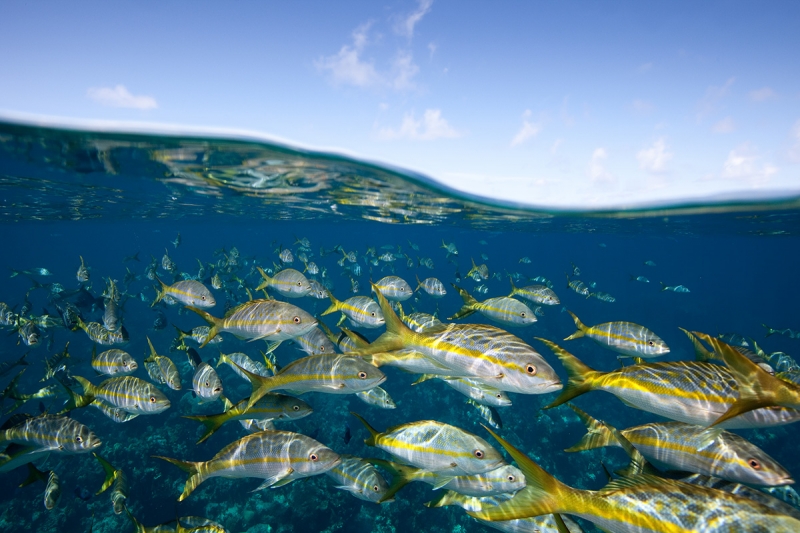
His underwater experiences closer to home, just off the Florida Keys, have made Frink a committed conservationist. He’s on the board of directors of the Key Largo-based Coral Restoration Foundation and often donates his photos for conservation-related causes. “In my own backyard I’ve witnessed reef building corals dying, invasive species like lionfish running rampant, and the acidification of the ocean.”
And he’s seen oceans around the world suffering similar fates. “I’m the canary in the mine,” says Frink, who confesses he is so alarmed by vanishing fish stocks that he refuses to eat fish. “In my lifetime alone, the problems have become profound. We have to protect the oceans.”
One of the best ways to help protect them, says Frink, is to inspire people to care about marine conservation. “That’s one of the reasons I do what I do,” he says. “I’m always hoping to get that next dramatic picture of a great white or a beautiful portrait of a colorful clownfish because people have to see what needs to be saved in order to be inspired to take action. It’s all about creating awareness.”
RELATED: How to light photographs underwater
Robert Kiener is a writer in Vermont.

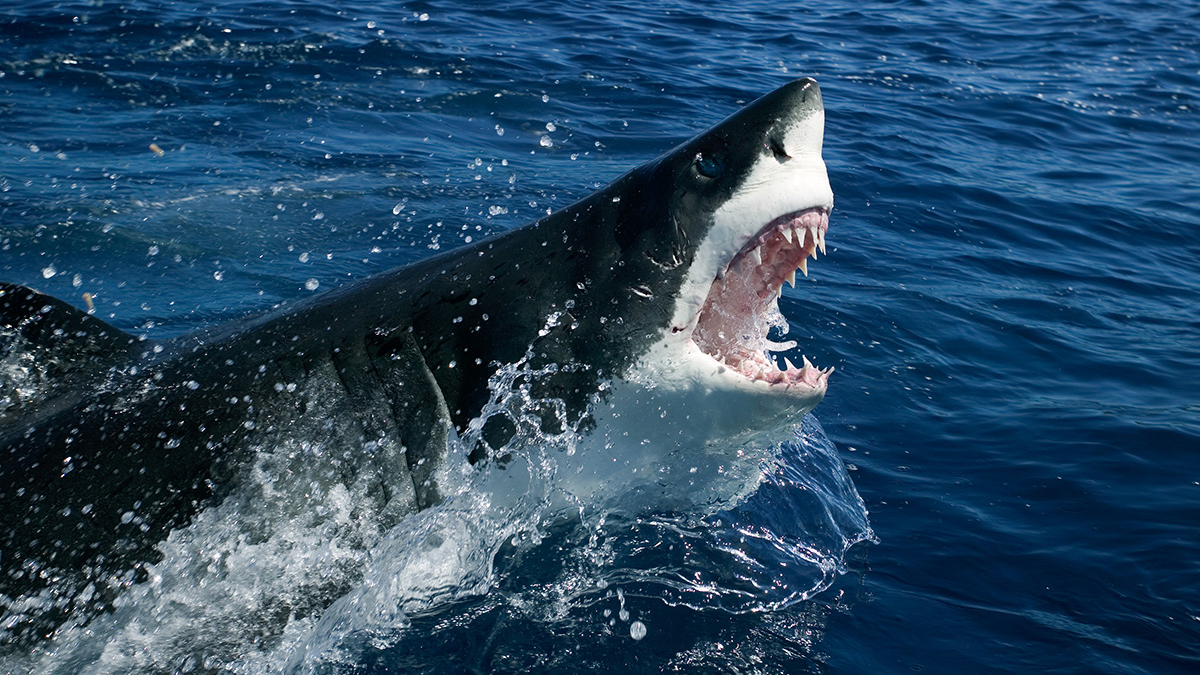
 View Gallery
View Gallery

